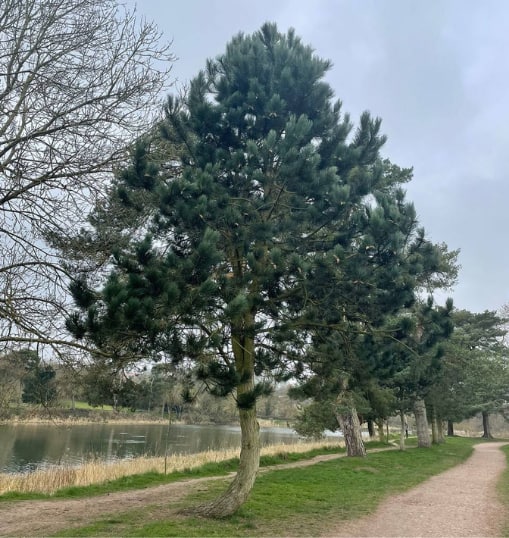
Introduction: Erosion is a pressing concern for many property owners, particularly in areas with sloping terrain or exposed soil. At Faversham Tree Surgeons, we understand the critical role that well-maintained hedges can play in preventing and mitigating erosion. In this blog post, we’ll explore how strategic hedge cutting can contribute to soil stability and erosion control, providing practical tips to help you manage your hedges effectively.
- Understanding Erosion and Its Causes
What is Erosion? Erosion is the process by which soil and rock are worn away and transported by natural forces such as wind, water, or ice. It can lead to significant loss of topsoil, reduced soil fertility, and landscape degradation.
Common Causes of Erosion
- Water Runoff: Heavy rainfall can create surface runoff that washes away soil, particularly in areas with sparse vegetation.
- Wind: Strong winds can blow away loose, unprotected soil, especially in arid or open areas.
- Human Activity: Construction, deforestation, and improper land use can exacerbate erosion by disturbing the soil and removing protective vegetation.
- The Role of Hedges in Erosion Control
Hedges as Natural Barriers Hedges can act as natural barriers that reduce the impact of wind and water on the soil. Their dense foliage helps to slow down water runoff and trap wind-borne soil particles, which can significantly reduce erosion.
Root Systems and Soil Stability The root systems of hedges play a crucial role in stabilising the soil. The network of roots helps to bind the soil together, preventing it from being washed or blown away. This stabilisation is particularly important on slopes and embankments where erosion risks are higher.
- How Hedge Cutting Contributes to Erosion Control
Maintaining Hedge Density Regular hedge cutting ensures that the hedge remains dense and healthy. A well-maintained hedge with a full canopy of leaves provides maximum protection against wind and water erosion. Thinning or poorly maintained hedges can lose their effectiveness, so it’s important to keep them in good shape.
Encouraging Stronger Root Growth Properly cutting hedges can promote the development of a more robust root system. By periodically cutting back the hedge, you stimulate new growth and strengthen the roots, which enhances soil stability. However, over-pruning or incorrect cutting techniques can have the opposite effect, so it’s essential to follow best practices.
Managing Hedge Shape and Size The shape and size of your hedge can impact its effectiveness in erosion control. Taller, denser hedges offer better protection against wind and water, while lower or sparse hedges may be less effective. Regular cutting helps maintain the optimal shape and size for erosion control.
- Best Practices for Hedge Cutting to Mitigate Erosion
Seasonal Cutting
- Winter: Avoid cutting hedges during the winter months, as this can leave soil exposed to harsh weather conditions. Instead, perform major cutting tasks in late summer or early autumn to allow the hedge to recover before winter.
- Spring and Summer: Regular maintenance cuts can be done during the growing season to ensure the hedge remains dense and healthy. This also helps to manage the hedge’s shape and size.
Selective Pruning
- Remove Dead or Diseased Wood: Regularly remove dead or diseased branches to promote healthy growth. This helps to maintain the hedge’s density and effectiveness in erosion control.
- Avoid Over-Pruning: Excessive pruning can weaken the hedge and reduce its ability to stabilise soil. Remove only what is necessary to maintain the desired shape and health of the hedge.
Replanting and Restoration
- Replant Bare Sections: If sections of your hedge become bare or sparse, consider replanting to fill in gaps. This will help maintain continuous coverage and maximise erosion control.
- Restoration Projects: For areas severely affected by erosion, consider implementing restoration projects that include planting new hedges or reinforcing existing ones with additional planting.
- Additional Erosion Control Measures
Combining Hedge Cutting with Other Techniques
- Ground Cover Plants: Complement hedges with ground cover plants that help to stabilise soil and reduce erosion. Plants such as grasses and low-growing shrubs can enhance the effectiveness of your hedges.
- Terracing: On steep slopes, terracing can be used in conjunction with hedges to create flat areas that reduce runoff and soil erosion.
Professional Advice
- Consult Experts: For large-scale erosion issues or complex terrains, consulting with professionals can provide tailored solutions. At Faversham Tree Surgeons, we offer expert advice on hedge management and erosion control.
Conclusion: Effective hedge-cutting is a key component in managing erosion and maintaining soil stability. By ensuring your hedges are well-maintained and strategically cut, you can enhance their ability to protect your property from the impacts of wind and water erosion.
Call us on: 01795 718991
Click here to find out more about Faversham Tree Surgeons
Click here to complete our contact form and see how we can help you with your tree’sneeds.